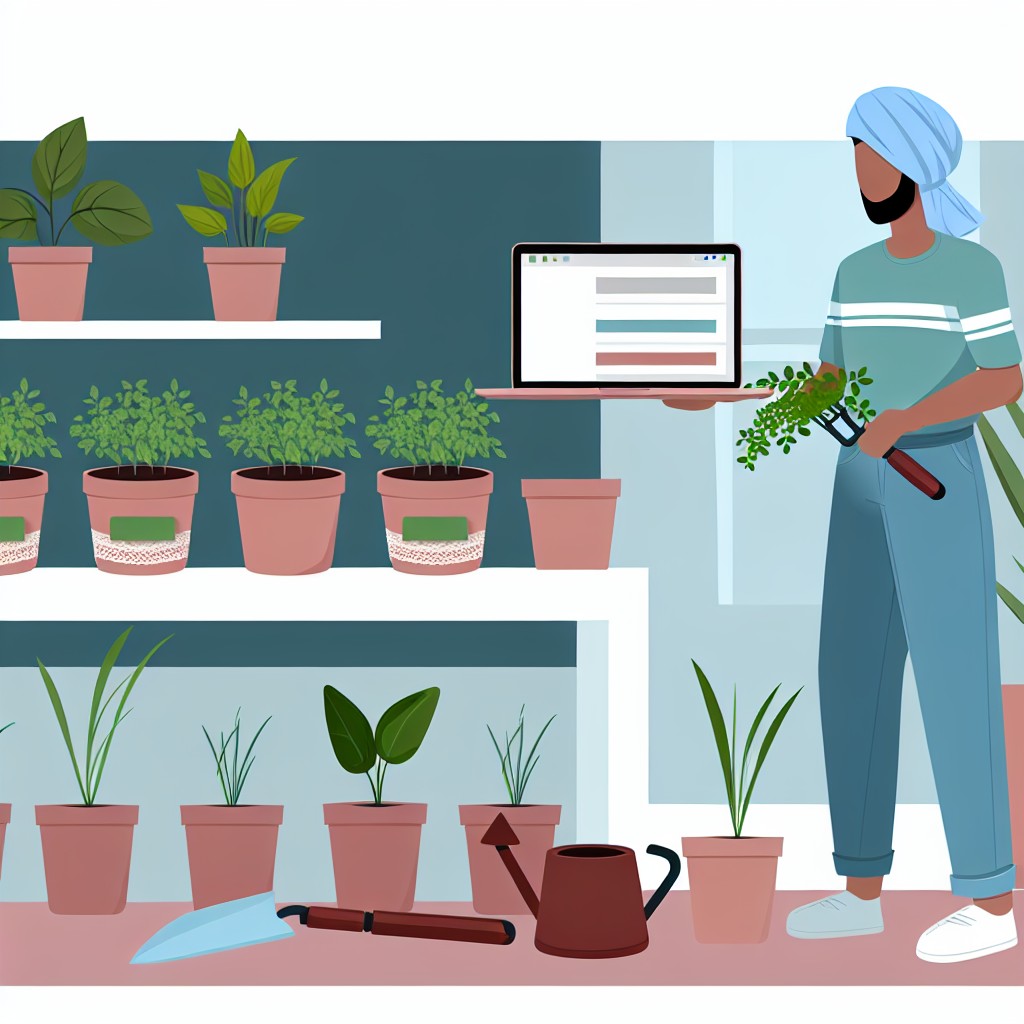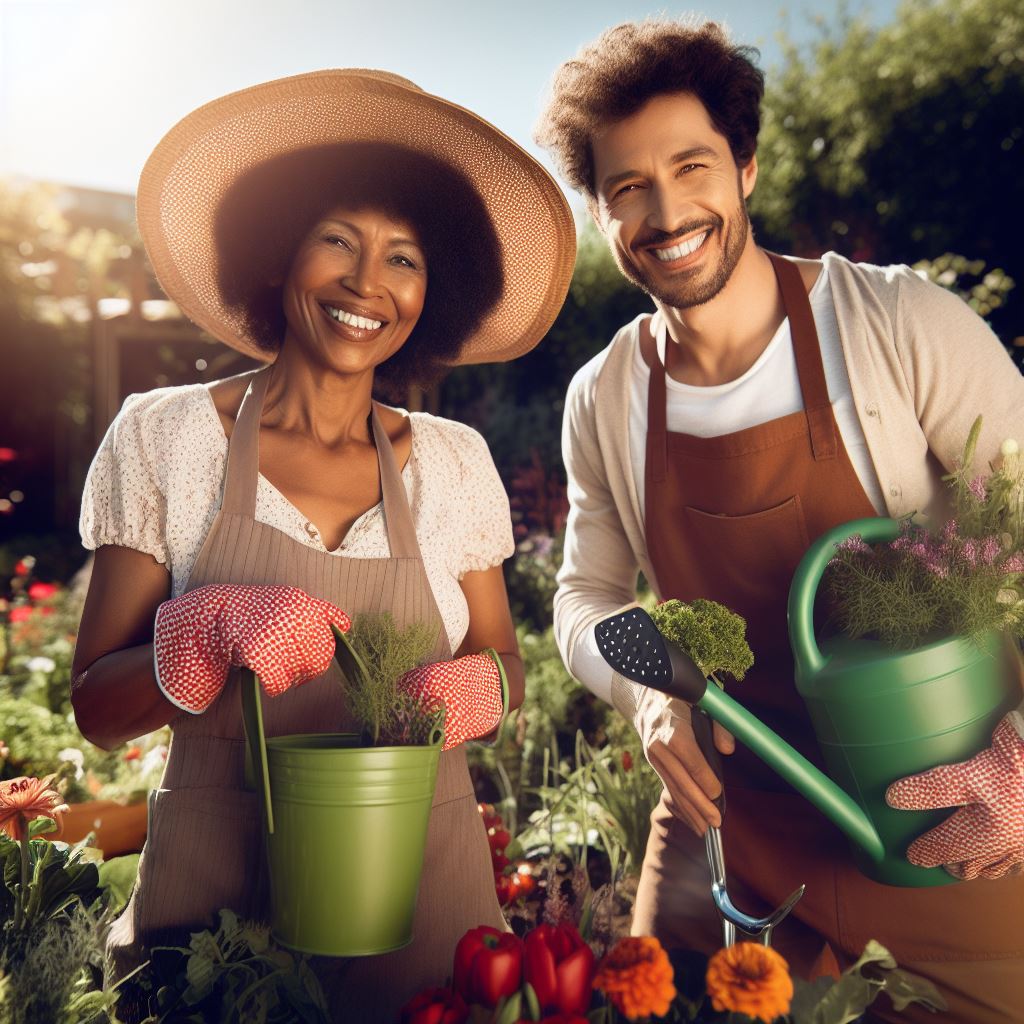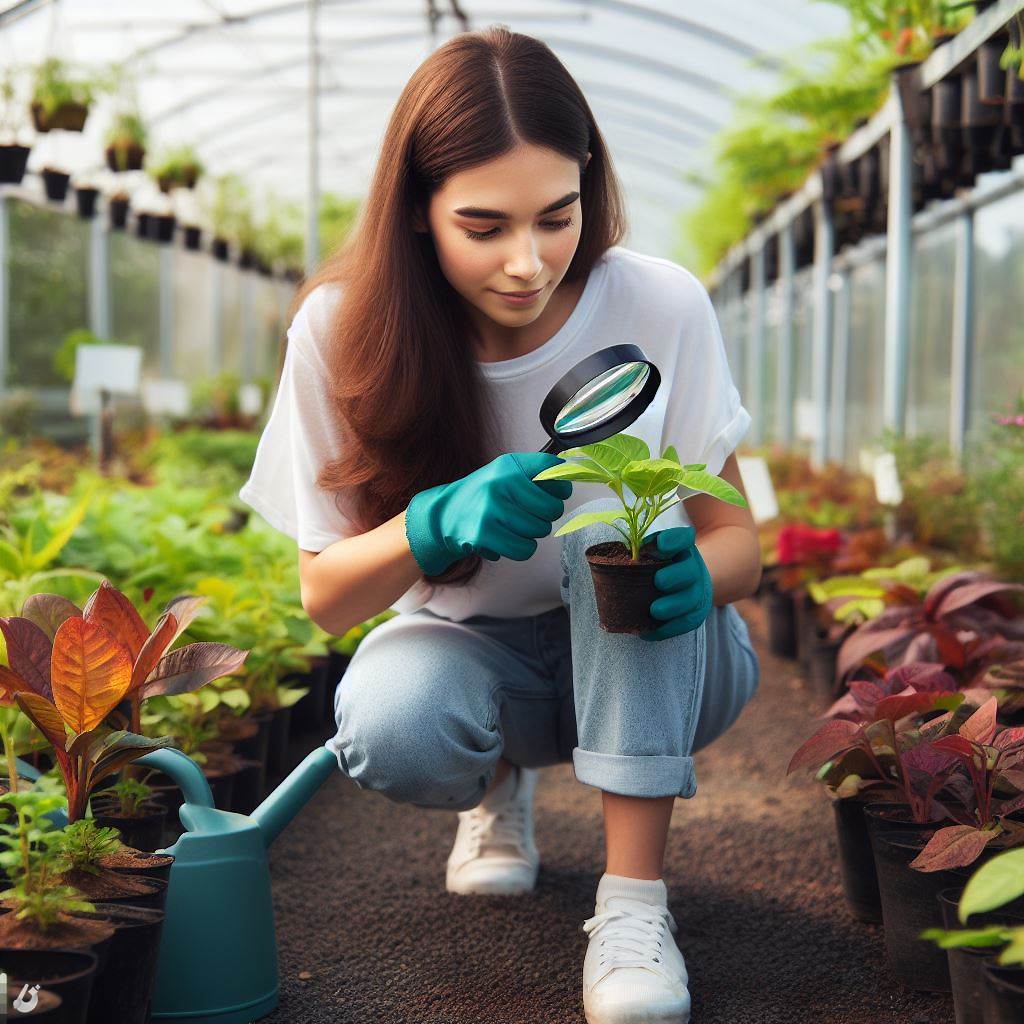Introduction to Indoor Gardening
Indoor gardening offers a rewarding hobby for many individuals.
It provides an opportunity to cultivate plants within the comfort of your home.
Growing herbs indoors is particularly beneficial.
These plants not only enhance the aesthetics of your space but also provide fresh ingredients.
Benefits of Growing Herbs at Home
One key benefit of growing herbs is having fresh flavors at your fingertips.
Homegrown herbs enhance the quality of your meals significantly.
Additionally, they can save you money on grocery bills.
Health Benefits
Cultivating herbs indoors contributes to a healthier lifestyle.
Herbs possess numerous health benefits due to their natural properties.
They can be rich in vitamins and antioxidants.
Moreover, using fresh herbs reduces the need for additives in cooking.
Aesthetic Appeal
Herbs can beautify your indoor space effectively.
They introduce greenery and vibrancy to any room.
Such plants can also purify the air, enhancing your living environment.
Using decorative pots can further enhance their visual appeal.
Transform Your Agribusiness
Unlock your farm's potential with expert advice tailored to your needs. Get actionable steps that drive real results.
Get StartedConvenience and Accessibility
Having herbs at home means easy access to fresh ingredients.
You can harvest them anytime for cooking or herbal teas.
This convenience promotes healthy cooking and dietary habits.
Furthermore, it’s easy to care for herbs with minimal space requirements.
Choosing the Right Herbs for Indoor Gardening: Top Picks for Beginners
Why Choose Herbs for Indoor Gardening?
Herbs are easy to grow indoors.
They require minimal space.
They enhance the flavor of your meals.
They provide fresh aromas.
Additionally, growing herbs can boost your mood.
They also purify indoor air.
Top Herb Selections for New Indoor Gardeners
Choosing the right herbs makes indoor gardening enjoyable.
Start with these beginner-friendly options.
- Basil
- Mint
- Parsley
- Cilantro
- Chives
Basil: A Versatile Favorite
Basil thrives in sunlight.
It needs well-drained soil.
It grows well in pots.
Basil adds flavor to many dishes.
Regular pruning encourages bushy growth.
It also promotes abundant leaves.
Mint: A Refreshing Choice
Mint is robust and grows easily indoors.
This herb prefers partial sunlight.
It also needs moist soil.
Because it spreads quickly, plant it separately.
Parsley: A Nutritious Herb
Parsley is packed with vitamins and minerals.
It requires consistent moisture.
Showcase Your Farming Business
Publish your professional farming services profile on our blog for a one-time fee of $200 and reach a dedicated audience of farmers and agribusiness owners.
Publish Your ProfileParsley can handle low light.
Regular harvesting encourages new growth.
This enhances its flavor.
Cilantro: A Unique Flavor
Cilantro grows quickly.
It prefers cooler temperatures.
Cilantro thrives in full sun.
It needs well-drained soil.
Harvest leaves regularly for continued growth.
Chives: A Simple Addition
Chives are easy to grow.
They require minimal care.
Chives prefer moderate sunlight.
They tolerate shade well.
Cutting chives regularly encourages fresh growth.
This improves their flavor.
Guidelines for Starting Your Indoor Herb Garden
Begin by selecting herbs based on your cooking preferences.
Use quality soil for better growth.
Choose pots with good drainage.
Ensure your herbs get ample sunlight.
Ideally, provide six hours of sunlight daily.
Essential Supplies for Indoor Herb Gardening
Pots for Your Herbs
Choosing the right pots is crucial for herb gardening.
Opt for containers that have drainage holes.
Drainage prevents water from pooling at the roots.
Moreover, select pots that suit the size of your herbs.
Small herbs may thrive in smaller pots.
Conversely, larger herbs benefit from bigger containers.
Soil Considerations
The type of soil you use greatly impacts herb growth.
Opt for a high-quality potting mix designed for herbs.
This mix retains moisture while allowing for proper drainage.
Additionally, consider including organic compost.
Compost enriches the soil with essential nutrients.
Regularly check soil moisture to avoid overwatering.
Lighting Options
Indoor herbs need sufficient light to thrive.
Natural sunlight is ideal, so place pots near windows.
Most herbs require at least six hours of light daily.
However, during winter months, natural light may lessen.
In such cases, use grow lights to supplement light needs.
LED grow lights are energy-efficient and effective.
Additional Essential Supplies
Besides pots, soil, and lights, consider other supplies.
Herb scissors make harvesting easier and cleaner.
A spray bottle helps with humidity control.
Showcase Your Farming Business
Publish your professional farming services profile on our blog for a one-time fee of $200 and reach a dedicated audience of farmers and agribusiness owners.
Publish Your ProfileFurthermore, labels can help you track different herb varieties.
Invest in a watering can with a long spout for convenience.
These additional items ensure a successful indoor herb garden.
Delve into the Subject: Vertical Farming for Scaling Indoor Agriculture Operations
Optimal Growing Conditions for Indoor Herbs
Light Requirements
Indoor herbs thrive on ample light exposure.
They ideally need 12 to 16 hours of light daily.
Consider using grow lights if natural sunlight is limited.
LED grow lights are energy-efficient and effective.
Position the lights about six inches above the plants.
Regularly adjust the height as the herbs grow.
Observe your plants for signs of light stress.
Yellow leaves may indicate inadequate light.
Conversely, burnt leaves can signal excessive light exposure.
Temperature Considerations
Maintain a consistent temperature in your indoor garden.
Herbs generally prefer temperatures between 65°F and 75°F.
Avoid placing herbs near drafts or heat sources.
Cold temperatures can stunt herb growth.
Warm temperatures may lead to quick flowering.
Keep an eye on temperature fluctuations.
Use a thermometer to monitor conditions accurately.
Humidity Levels
Herbs prefer a humidity level of 40% to 60%.
Indoor air can often be quite dry, especially in winter.
Use a humidifier to raise humidity if necessary.
Alternatively, place a tray of water nearby.
Grouping plants can also help increase humidity levels.
Observe your herbs for signs of low humidity.
Brown tips on leaves may indicate dryness.
You Might Also Like: Comprehensive Guide To DIY Garden Projects For Regenerative Farming In The USA
Watering Techniques for Indoor Herbs
Understanding Watering Needs
Every herb has unique watering needs based on its type.
Research the specific requirements of each herb you grow.
Generally, herbs prefer slightly moist soil but avoid soggy conditions.
Monitoring your environment helps refine your watering schedule.
Preventing Overwatering
Overwatering is one of the most common mistakes gardeners make.
To prevent this issue, always check the soil moisture before watering.
Stick your finger into the soil up to two inches deep.
If the soil feels dry, it’s time to water your herbs.
Alternatively, if it feels damp, wait a few days before the next watering.
Choosing the Right Containers
Container choice significantly impacts drainage and moisture retention.
Opt for pots with good drainage holes to allow excess water to escape.
Terracotta pots are also excellent as they absorb moisture, helping prevent overwatering.
Showcase Your Farming Business
Publish your professional farming services profile on our blog for a one-time fee of $200 and reach a dedicated audience of farmers and agribusiness owners.
Publish Your ProfileEnsure your containers are not too large for the herbs you select.
Using the Right Watering Technique
Watering techniques vary, but consistency is essential.
Water herbs thoroughly, allowing water to drain out of the bottom.
This practice encourages root growth and overall plant health.
Try to water in the morning when the temperatures are cooler.
Avoid watering at night to prevent root rot from excess moisture.
Monitoring Environmental Factors
Environmental conditions play a crucial role in watering needs.
Factors such as humidity, temperature, and light affect soil moisture levels.
In warmer months, herbs may need more frequent watering.
During cooler months, reduce the frequency to avoid soggy soil.
Use a moisture meter for an accurate assessment of soil conditions.
Recognizing Signs of Overwatering
Recognizing the signs of overwatering is vital for herb health.
Yellowing leaves often indicate too much water in the soil.
Wilting can also occur due to root saturation.
Inspect your herbs regularly for these critical indicators.
Adjust your watering schedule immediately if signs appear.
Gain More Insights: Seasonal Gardening Strategies For Sustainable Small-Scale Farming In USA

Fertilization Strategies for Healthy Indoor Herbs
Understanding Fertilization Choices
Proper fertilization is vital for indoor herbs.
It provides essential nutrients for growth.
Gardeners can choose between organic and synthetic options.
Each option has distinct benefits and considerations.
Organic Fertilization Options
Organic fertilizers are derived from natural sources.
They promote soil health and beneficial microorganisms.
Common organic options include compost and worm castings.
You can also use fish emulsion and seaweed extract.
These fertilizers release nutrients slowly over time.
Benefits of Organic Fertilizers
Organic fertilizers enhance soil structure.
They improve water retention and aeration in the soil.
Moreover, they reduce the risk of chemical buildup.
Synthetic Fertilization Options
Synthetic fertilizers are chemically manufactured.
They provide immediate nutrients for plants.
Examples include granular fertilizers and liquid feeds.
These products are often more concentrated than organic ones.
Benefits of Synthetic Fertilizers
Synthetic fertilizers offer targeted nutrient applications.
They can address specific nutrient deficiencies quickly.
They generally allow for easier control over nutrient levels.
Factors to Consider When Choosing Fertilizers
Consider your gardening goals when choosing fertilizers.
If you desire long-term soil health, organic is preferable.
On the other hand, synthetic fertilizers provide quick results.
Evaluate factors such as plant types and growth stages.
Showcase Your Farming Business
Publish your professional farming services profile on our blog for a one-time fee of $200 and reach a dedicated audience of farmers and agribusiness owners.
Publish Your ProfileLastly, consider your environmental impact preferences.
See Related Content: Small Livestock Management for Climate-Resilient Farming Practices
Common Pests and Diseases in Indoor Herb Gardening: Prevention and Treatment
Introduction to Common Problems
Indoor herb gardeners may face various pests and diseases.
These issues can hinder the growth of plants.
Identifying problems early helps improve outcomes.
Common Pests
Several pests frequently target indoor herbs.
- Aphids are small and often infest new growth.
- Spider mites thrive in dry conditions and suck plant sap.
- Whiteflies can cause yellowing leaves and stunted growth.
- Mealybugs appear as white, cottony masses on plants.
Identifying Pests
Look for unusual changes in leaves or stems.
Sticky residue on plants often indicates aphids or whiteflies.
Additionally, webbing on leaves hints at spider mites.
Prevention of Pests
Maintaining cleanliness is vital in indoor gardens.
Regularly inspect plants for early signs of pests.
Using neem oil as a preventive measure proves effective.
Moreover, introducing beneficial insects can naturally control pests.
Treatment Options for Pests
Once pests are identified, it is time for treatment.
Insecticidal soap works well for many soft-bodied insects.
Alternatively, rubbing alcohol can eliminate mealybugs quickly.
Additionally, keep an eye on newly introduced plants.
Common Diseases
Diseases can also plague indoor herb gardens.
- Powdery mildew shows as white spots on leaves.
- Root rot is often caused by overwatering.
- Fungal infections tend to develop in humid conditions.
Identifying Diseases
Powdery mildew typically appears on leaves, particularly in low light.
Check root systems for mushy or dark roots indicating rot.
Fungal infections may require close monitoring for spotting.
Prevention of Diseases
Proper watering techniques help prevent root rot.
Ensure adequate air circulation around plants.
Furthermore, avoid overcrowding your herb containers.
Treatment Options for Diseases
Treat powdery mildew with fungicidal sprays or baking soda solutions.
For root rot, remove affected roots and repot plants in dry soil.
Address fungal infections promptly with appropriate antifungal treatments.
Strategies for Consistent Indoor Herb Health
Regularly monitor your indoor herbs for signs of trouble.
Implement preventive measures to keep pests and diseases at bay.
Act quickly when issues arise to protect your plants.
Harvesting and Preserving Herbs
Timing the Harvest
Timing is crucial when harvesting herbs for maximum flavor.
Harvest during the early morning for the best taste.
Look for healthy, vibrant leaves before cutting.
Remember, wait until the plant has enough leaves to recover.
Proper Harvesting Techniques
Use sharp scissors or garden shears to avoid damaging the plant.
Cut the stems above a pair of leaves to encourage regrowth.
Avoid stripping the plant bare; always leave some foliage.
This helps the plant continue to thrive and produce more herbs.
Drying Herbs for Preservation
Drying is an effective method for preserving herbs.
Bundle fresh herbs and hang them upside down in a dark area.
Showcase Your Farming Business
Publish your professional farming services profile on our blog for a one-time fee of $200 and reach a dedicated audience of farmers and agribusiness owners.
Publish Your ProfileEnsure good air circulation to prevent mold growth.
Check the herbs regularly for dryness, which usually takes one to two weeks.
Freezing Fresh Herbs
Freezing is another way to preserve the flavor of herbs.
Chop the herbs and place them in ice cube trays.
Cover them with water or oil for easy use later.
This method allows you to add fresh flavors to your dishes any time.
Using Salt or Sugar for Preservation
Salt and sugar can also preserve herbs effectively.
Layer herbs with salt or sugar in a container.
Seal the container and store it in the fridge for several weeks.
This infuses the salt or sugar with the herb’s flavor.
Storing Dried Herbs
Store dried herbs in airtight containers to maintain freshness.
Keep them in a cool, dark place, away from sunlight.
Label containers with the date and type of herb for easy identification.
Use dried herbs within six months for the best flavor.
Additional Resources
Tiny Victory Gardens | Tips on Growing Food Without a Yard …
Five Herbs and Vegetables to Use as Cut Flowers – the kokoro garden




